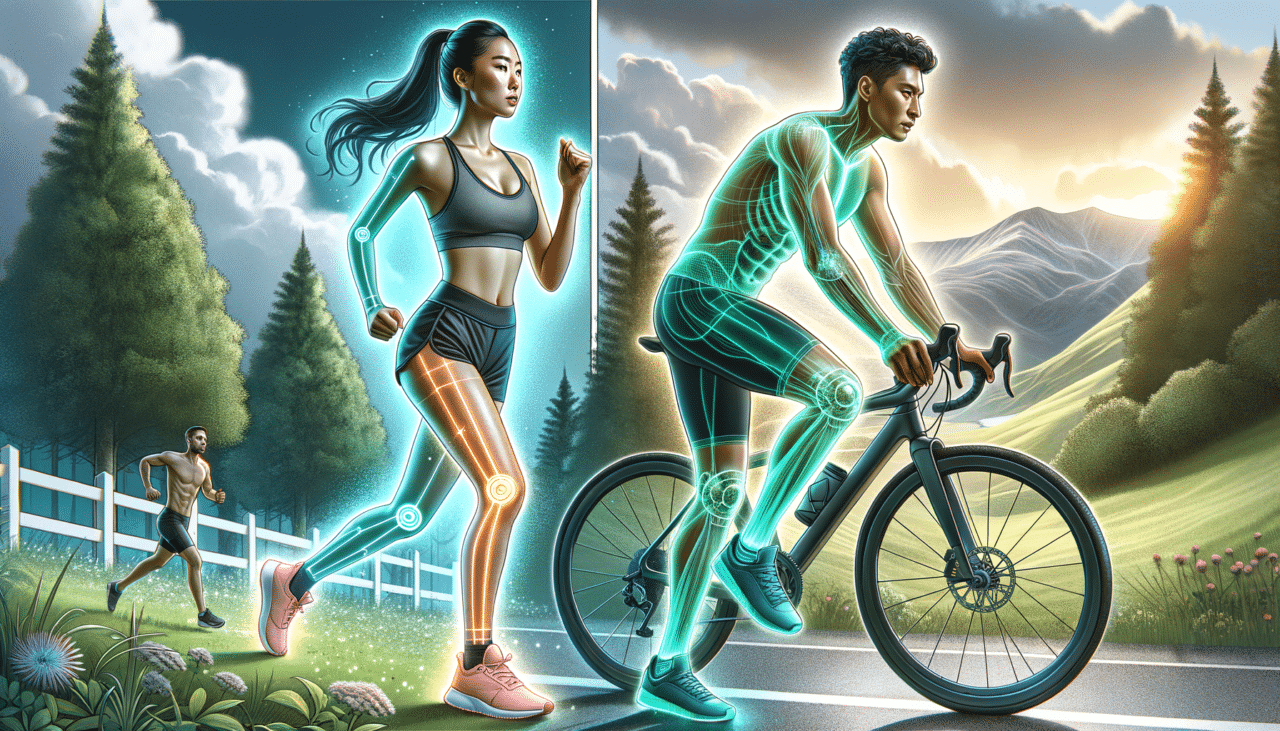Running vs. Cycling: Cardio Load and Joint Impact
In the bustling streets of Cairo, where the pyramids cast long shadows over the city and the Nile whispers tales of old, a modern-day debate unfolds quietly, echoed in the pulse of modern health enthusiasts: Running or cycling? Both are revered cardiovascular workouts, each with its unique allure and benefits. But which is more suited for your fitness goals, and how do they impact your joints?
This article seeks to unravel this conundrum, much like deciphering the hieroglyphs of ancient Egypt, with an analytical lens and a storyteller’s heart. Let us journey into the heart of this comparison, mapping out the landscapes of cardio load and joint impact, much like one would traverse the diverse terrains of the Arab world.
Comparative Table: Running vs. Cycling
| Aspect | Running | Cycling |
|---|---|---|
| Cardio Load | High – Engages multiple muscle groups, elevates heart rate quickly. | Moderate to High – Varies with intensity and terrain. |
| Joint Impact | High – Increased impact on knees, ankles, and hips. | Low – Minimal impact, suitable for individuals with joint concerns. |
| Calorie Burn | Approximately 600-900 calories/hour (depends on pace). | Approximately 400-700 calories/hour (depends on speed and resistance). |
| Muscle Engagement | Predominantly lower body – calves, quads, glutes, and hamstrings. | Primarily lower body, but can engage upper body with proper technique. |
| Accessibility | High – Requires only a pair of shoes and open space. | Moderate – Requires a bicycle and safety gear. |
| Weather Dependency | High – Adverse weather can significantly affect running. | Moderate – Biking indoors on a stationary bike is a viable alternative. |
| Cost | Low – Minimal investment in gear. | Moderate to High – Initial investment in a bicycle and maintenance. |
| Social Aspect | Moderate – Can join running clubs or events. | High – Group rides and cycling clubs are prevalent. |
Running: Characteristics
Running is the heart’s desert dance, a rhythmic pounding that mirrors the ancient footsteps of those who once traversed the sands of Egypt. It is a high-intensity cardiovascular exercise that requires minimal equipment—just your will, a good pair of shoes, and the open road. The cardio load is significant, making it one of the most efficient ways to elevate your heart rate and burn calories. However, like the ancient stones of Giza, it can be unyielding on the joints, particularly affecting the knees, ankles, and hips.
Running builds endurance and strengthens the lower body muscles, offering a profound sense of freedom and connection to the world around you. It is an accessible form of exercise, though weather conditions can sometimes dictate your ability to partake in this activity.
Cycling: Characteristics
Cycling, on the other hand, is akin to a leisurely sail down the Nile—a journey that is gentle yet invigorating. It offers a moderate to high cardio load, depending on the intensity and terrain of your ride. Unlike running, cycling is kind to the joints, making it an ideal choice for those concerned about impact-related injuries.
Cycling engages the lower body muscles, much like running, but also offers the potential to involve the upper body with proper technique. It requires a bicycle, which can be an initial financial investment, yet it opens up the opportunity for social interaction through group rides and cycling clubs. Weather can affect outdoor cycling, but indoor stationary bikes provide a solution, allowing for consistency in training.
In conclusion, the choice between running and cycling is not one of right or wrong, but rather a personal journey of discovery, much like exploring the rich tapestry of cultures across the Arab world. Each offers a unique path to fitness, shaped by your goals and physical needs. Whether pounding the pavements or pedaling through trails, both running and cycling promise a journey of health and adventure.

Comments (0)
There are no comments here yet, you can be the first!